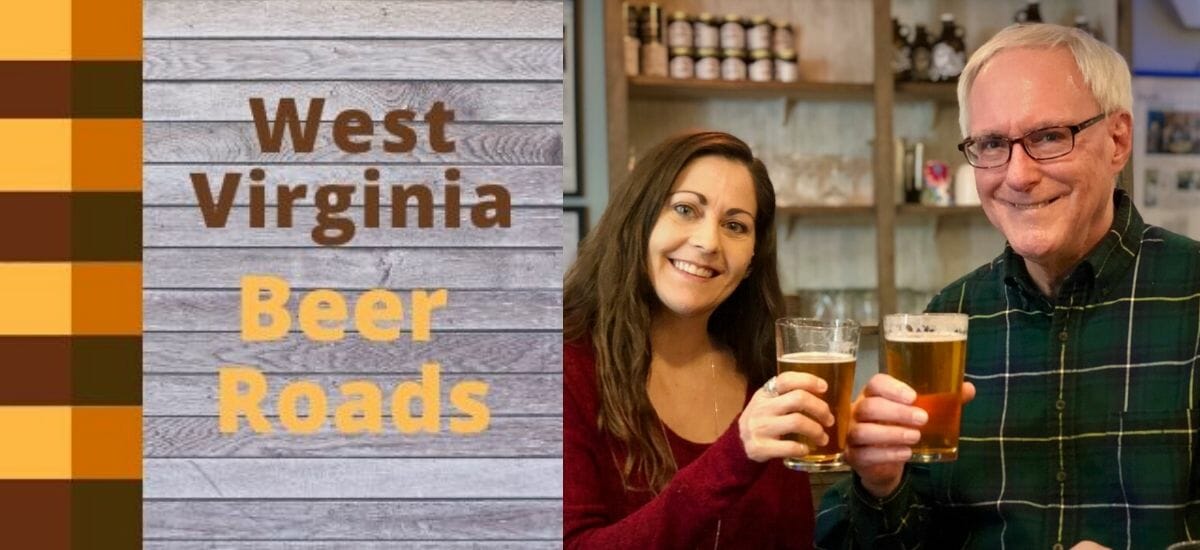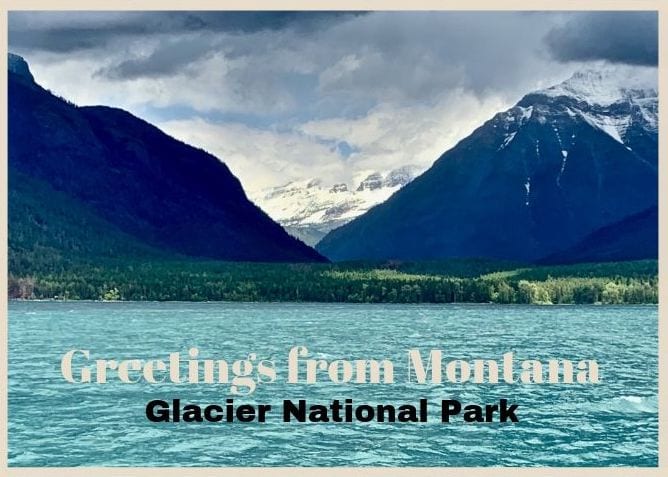
Postcards and beer culture from Montana
September 10, 2019
This summer, I made my first ever visit to the State of Montana. I’m not getting any younger, and I decided there’s no time like now to get out and see the national parks, wildlife, and historical features that region offers. While the mountain scenery was undeniably gorgeous and the place is chock-full of Lewis & Clark and General Custer history, what impressed me most was the beer culture. (Surprise, this is a beer blog. )

I couldn’t help but compare our West Virginia beer culture and market to theirs. The more I compared, the more curious I got. I found a lot of similarities and also some significant differences. I came away believing that maybe our West Virginia beer scene could benefit by gravitating a bit more toward the Montana model.
Montana is mostly rural, partly flat and partly mountainous. The flatter regions are dominated by agriculture. The more hilly areas are forested. It only has a little over one million residents spread across a state that is six times the area of West Virginia. It has no large cities, but has a bunch of small cities grouped in the central and western sections of the state. Each one is about two, three or four hours-drive apart from the others. They have a very outdoor-oriented culture, with lots of hunting, fishing, hiking, kayaking, and such.
The brewery scene
Most Montana breweries are quite small. The majority of them sell only through their own taprooms and may self-distribute around their own towns or local areas. The state has some quirky brewery laws that give brewers fits, but they work around them and find ways to thrive.

For its 1.1 million people, Montana has around 90 breweries. For West Virginia’s 1.7 million people, we have 27 breweries. The question immediately hit me: How does a state with considerably less population than West Virginia, support three times times as many breweries as we do?
According to Brewers Association estimates, those 90 or so Montana breweries produced around 197,000 barrels of craft beer in 2018. Several larger craft breweries there accounted for around 80,000 barrels of that total. Of course some of that beer is shipped outside the state and not consumed there. But, compare that total to the estimated 19,000 barrels produced in West Virginia in 2018. I don’t need to use a calculator to see that Montana breweries made 10 times more beer than WV breweries.
Granted, Montana residents on average do consume a lot more beer than most. In fact, the residents consume the second-most beer per capita of any state in the nation with 39.4 gallons annually (according to 2017 data published in trade publication Beer Marketer’s Insights). West Virginia is no slouch, however, tied for 24th with annual per capita consumption of 27.4 gallons (an amount higher than any of its surrounding states).
Before you think Montana’s big advantage in per capita beer consumption accounts for the difference in the number of local breweries, consider this:
WV – Total annual beer consumption: 37.8 million gallons (2017 data)
MT – Total annual beer consumption: 30.4 million gallons (2017 data)
Due to its much smaller population, Montanans actually consumed less beer annually in total than did West Virginians. The way I see it, that should put us about on par with them when it comes to the raw potential to support local breweries. But as I study the numbers, I see West Virginia has only 1.9 breweries per capita for adults 21+, while Montana has 11.4 (Brewers Association data). Again, questions arise. Why such a big difference?
The development of craft breweries
Some might think Montanans have always consumed lots of local beer, but that was not always true. For like West Virginia, they lost their local heritage breweries either to Prohibition in 1918 or to competition with Bud-Miller-Coors in the 1960s, 70s, and 80s. Montana only saw a lot of new breweries popping up in the last 25 years with the rise of the microbrewing/craft brewing era. While that is very similar to WV’s experience, some significant differences exist in their experience with how those early craft breweries developed.
Matt Kwasniewski, president and founder of Big Timber Brewing Company, is probably the only brewer to work at breweries in both Montana and West Virginia. I also find him to be one of the more insightful brewery owners in our state. He says that an important point to recognize is that the rise of craft breweries in Montana and West Virginia was “drastically different.” Several Montana breweries that started in the late 1980s to mid 1990s had good success and grew pretty large, while West Virginia breweries that began in that era stayed tiny or went out of business.

“I’m not sure if Bayern Brewing is the oldest in Montana,” Kwasniewski says, “but it was founded in 1987, with Big Sky Brewing and Kettle House getting started in the mid-1990s. By the time I was there in 2010, those three were pumping out close to 70,000 barrels (annually).”
That certainly is a lot of beer culture. Now, not all of that beer was being consumed in Montana, but, as Kwasniewski’s observation attests, in 2010, those three breweries dominated the state’s beer production.
While I don’t have any survey data to back this up, it seems that a higher percentage of Montana breweries package their beer in cans and bottles than you find at West Virginia breweries. Even if that is not the case, you do see seem to see more local brands in distribution at beer retailers. Besides its largest breweries, Montana, today, also has sereval more breweries that fall into the 2,000 to 10,000 barrel annual production area. Breweries in this range are going to package their beer, and for them, distribution will be more important.
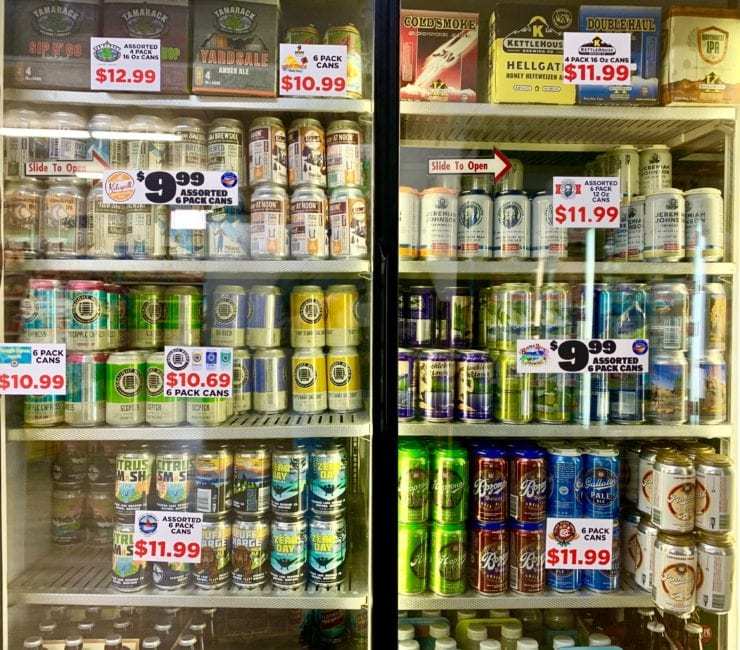
Matt Kwasniewski’s observations backs this up. “If you go into a Town Pump (kind of the Go Mart of MT), you will usually find at least 10 different Montana breweries’ beers on their shelves,” he says. “So I would say distro is a big deal for a lot of the more established breweries there. For example, the brewery I worked at (Glacier Brewing) did about 700 barrels a year, and we sold six packs for distribution of seven different beers.”
It does stand to reason that if Montana breweries are producing a lot of beer and Montanans are drinking a lot of local beer, that distribution of local beer would be much more advanced there than it is here.

The changing landscape of beer culture
Kwasniewski tells me that in 2010, there were 33 breweries in the Montana, which seemed like a lot at the time. Today, nine years later, there are over 90. While their larger craft breweries are still important, they seem to be stagnant or declining relative to the newer, smaller breweries. According to Brewers Association estimates, those three mature Montana breweries that produced 70,000 barrels in 2010, only hit 60,500 barrels in 2018. Most of the growth in Montana’s brewing scene during the current decade comes from smaller, newer start-up breweries. Across the country, this decade is marked by the rapid growth of small, independent breweries. Even in West Virginia: 6 breweries in 2010 grew to 27 in 2019.
What we see as the landscape of local beer today in West Virginia and in Montana is significantly different than it was 10 years ago. The new generation of small, local breweries, selling mainly out of their own taprooms rather than primarily through distribution, are the hot ticket of the day. Larger regional and national craft breweries are becoming stagnant in sales. The neighborhood brewery taprooms are transforming the industry. For whatever the set of reasons, Montana is a among the states leading the way in that change.
Why Montana is more accelerated
The fact that Montana had several nice-sized, successful regional breweries, which had been around since the 1990s, likely helped accelerate the development of the smaller neighborhood breweries there. It showed investors that you could make a good, long-term business out of brewing and selling beer. While in WV, the failure of our big-money-invested breweries from the 1990s (think Wheeling’s Nail City and Huntington’s Brewbakers) may have told investors to stay away from the industry.
Kwasniewski believes that Montana’s large agricultural industry helps people there appreciate local beer more. “The other big thing is the agribusiness,” he says. “Beer is an agricultural product, and there is just way more agriculture in Montana than West Virginia. Several cheesemakers, some small dairies, lots of butcher shops, and tons of farms. People expect stuff to taste different in one part of the state than it does somewhere else.”
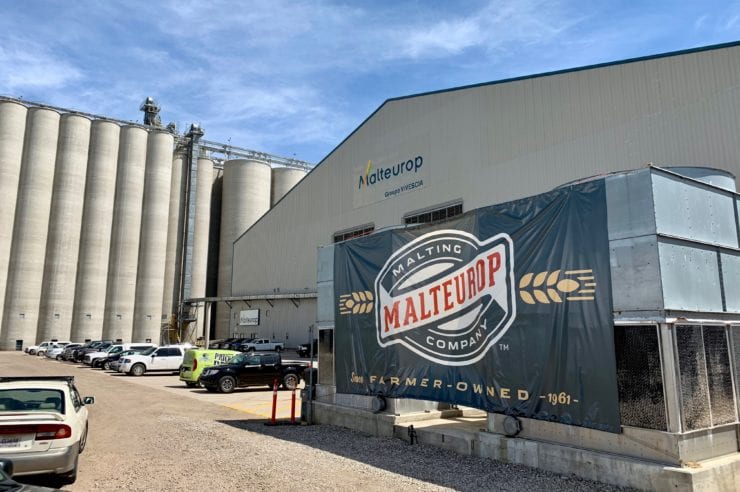
One thing I did see first-hand while visiting Montana were the large fields of malting barley under cultivation. There is an agricultural area of Montana they call the Golden Triangle that reputedly produces some of the best brewing barley in the nation. That should certainly give farming communities there a greater affinity for beer.
Kwasniewski suggests a couple more factors that he thinks could help account for the differences in the two states. From his experience, beer, and the consumption of alcohol in general, doesn’t have the negative stigma out there that you still run into sometimes in West Virginia. He says Montana bars have always been family friendly and consumption of beer at public events, such as fairs and rodeos, “is the norm not the exception.”
Kwasniewski thinks another reason Montana is developing more rapidly than West Virginia is due to its homebrewing culture. “I’m not sure if is as apparent now as it was when I was there,” Kwasniewski says, “but before every town had a brewery, it had a homebrew supply shop or at least a store that sold brewing supplies. Most grocery stores sold liquid malt extract.” No doubt, homebrewing is a development ground for brewers, and having more of it should lead to more people taking the commercial brewing plunge.
So to wrap this up, there is likely credence in the assertion that Montana’s head start in craft brewing could be rooted in their early success with a couple of breweries that grew into regional size, their larger agriculture industry, the greater popularity of homebrewing, and even somewhat in their more laissez faire public attitudes on alcohol.
What Montana’s experience does show is that a small population state that has no major metro areas can still have a vibrant small brewing industry. You don’t need a big city to have lots of successful small breweries.
West Virginians love beer
Earlier, I showed that West Virginians drink a lot of beer (more per capita than folks in any surrounding state), but they don’t yet drink much locally brewed beer. I am encouraged, however, by the recent new investments and growing production numbers at our larger breweries, places like Greenbrier Valley Brewing and Big Timber Brewing. Those breweries are headed in the right direction and are helping improve our local beer production numbers. But they need help from more smaller, local breweries.
Due to current craft beer market trends, it is going to be hard for many of the breweries that focus on distribution to grow substantially. There are just not enough tap handles and self space available to keep adding more and more beer brands. A few will make it, but, today, that model is a difficult climb. Nationally, the most rapid growth in beer sales and the quickest road to profitability is coming from the small breweries that primarily sell through their own taprooms — especially those that sell 50% or more of beer they brew through their own taps/store. They may also can and bottle, but they sell most of those out of their taprooms too. That is exactly the business model we need more of in West Virginia.
In the Charleston area, we craft beer fans constantly bitch and moan, wishing more of the little West Virginia breweries would distribute more so we could get more good beer. But if we had five or six additional local breweries in the metro, you probably wouldn’t hear those laments any longer. We would be happy drinking our local beer.
My take on the opportunities
Brewers Association data for 2018 shows West Virginia breweries together produced only 0.4 gallons per 21+ adult, ranking us dead last among all states and the District of Columbia. That is so far below the national average, it’s a travesty. If Montana’s experience and national craft brewing trends tell you anything, it tells you that West Virginia has a huge upside for local breweries — even if the market penetration of breweries in West Virginia never reaches the level that Montana has achieved.
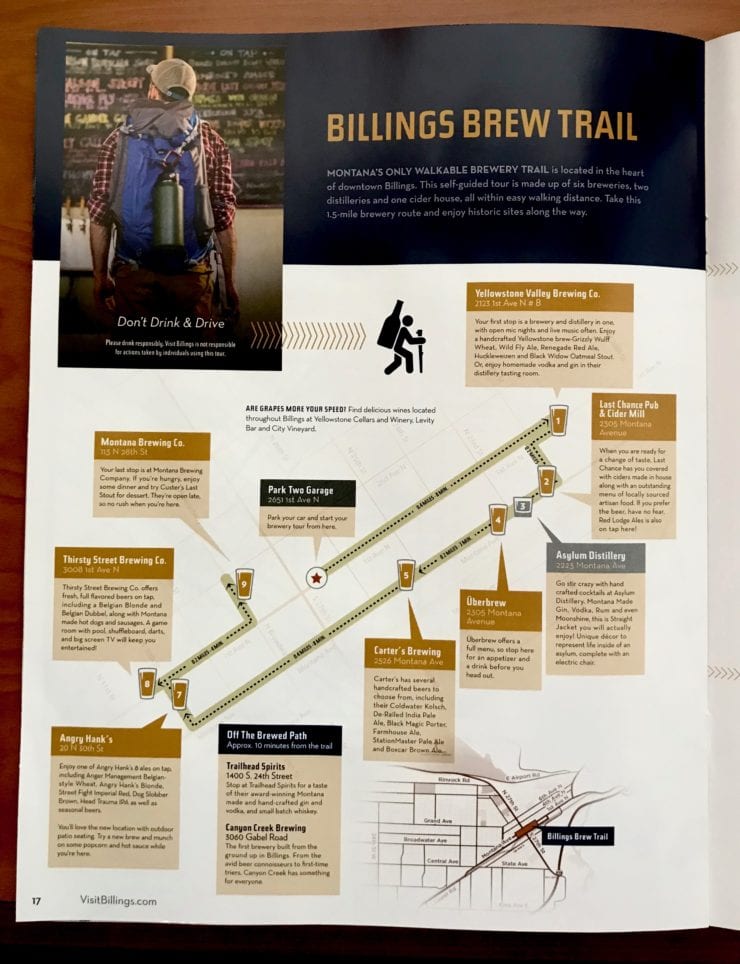
Some examples: You have to wonder how a city like Billings, MT, which has a metro area population less than that of either Charleston or Huntington, can have seven breweries when Charleston and Huntington each only have one brewery. Montana’s capital city, Helena, has three breweries in its downtown and two more in its suburbs, yet only has a metro population of 77,000. Morgantown — the best beer market in WV — has a metro population over 130,000 but has only has four breweries (including the 2 in Preston County). Great Falls/Cascade County MT measures up with 85,000 people and three breweries. Martinsburg/Berkeley County WV has a population of 120,000, yet has no breweries. The three-county Clarksburg WV metro area has 92,000 people and no brewery. What this tells me is that many of West Virginia’s most populous areas are sorely underserved with local breweries. It’s no wonder WV people don’t drink local beer. Will somebody please put up a sign: Breweries Are Welcome Here.
More local breweries mean more local beer
Everything I see and experience in my travels around West Virginia and the nation tells me that the primary reason West Virginia is dead last in the amount of local beer it produces per capita is largely due to West Virginians’ lack of exposure to local breweries. When you only have one little brewery in a city the size of Huntington or Charleston, the average person has almost no exposure to local breweries. Local beer is so peripheral to their lives that it doesn’t register. Because breweries are not more visible, local beer is not a part of the beer culture. People still drink a lot of beer, but they do not drink local beer. It doesn’t enter their mind.
In communities where there are a bunch of small local breweries, people don’t necessarily drink more beer, but they do drink a lot more locally brewed beer. Because they are much more exposed to it, it is a much greater part of their community’s identity.
And when you have six breweries in a city, chances are that a couple of them are going to be really good. That factor will also help create a stronger beer culture, stronger pride, and drive the sales of local beer higher.
People in Montana didn’t drink local beer until Montana had local breweries. West Virginians will not drink a lot of local beer until we get a lot more breweries, especially in our most populated areas.
Let’s do it
We have the market size. We have the vacant commercial properties. We just need investors and some additional talented brewers to get things accelerated. We could help Matt Kwasniewski and all our existing brewers if we warmed up a bit more to local beer, neighborhood by neighborhood, town by town.
Matt Kwasniewski summed it up well when he told me, “It would be nice to see more breweries in West Virginia and as many West Virginians drinking West Virginia beer as Montanans drinking Montana beer, but we need to get our quality and availability up before we get there.”
Beer quality makes a difference too
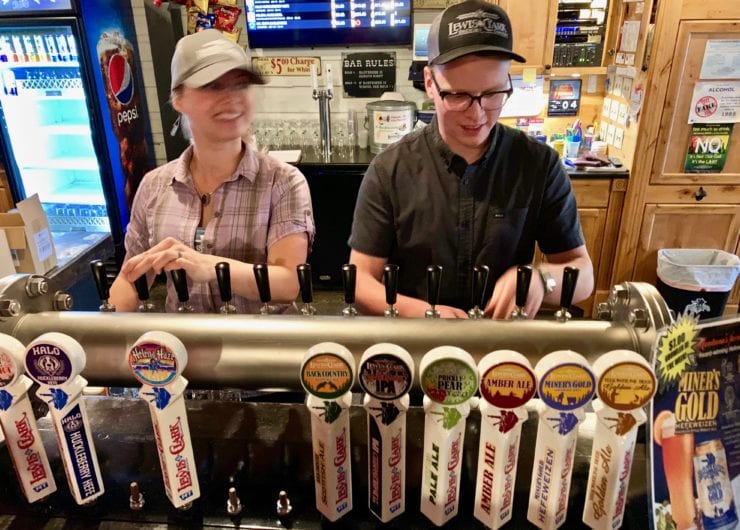
And while I know I tend to get carried away with numbers comparisons, I’m aware that just having a lot of breweries does not necessarily mean you have a great local beer scene. Quantity doesn’t equate to quality. But quantity does improve your chances that some of your breweries will be exceptionally good. I took a quick look at some simple qualitative measures for Montana from recent years and here’s what I found.
Great American Beer Festival
National Brewery of the Year Honors
- 2018 Small Brewing Company of the Year – Lewis & Clark Brewing, Helena, MT
- 2016 Small Brewing Company of the Year – Überbrew, Billings, MT
Great American Beer Festival (GABF) Medals
2014 2015 2016 2017 2018
MT 6 3 6 4 5
WV 0 0 0 0 0
World Beer Cup Medals
2014 2016 2018
MT 3 1 4
WV 0 1 0
Suffice it to say that Montana has some very good breweries producing some very good beer — and they have demonstrated that on the national stage. With 90 breweries competing against each other daily for a pretty small pie, they have to be on their toes. West Virginia also has some very good breweries, and hopefully, in time, they will get more national recognition for the quality beer they produce.
Epilogue – Montana Beer Culture
If you ever have the chance to get out to Montana, do it. Maybe you’re going primarily to ski or to visit Yellowstone or Glacier National Parks, but do take time to get out to a few breweries and see their beer culture for yourself. A great tool to use is the Montana Brewery Passport. The Montana Brewers Association website is another good resource for locating breweries in the areas you plan to visit.
Finally, I’m sending out a special word of appreciation to the Beer Now Conference. Without those folks putting together this awesome get-together for beer writers and communicators, I would likely never have gotten a close up experience with Montana beer. If you are a beer writer, blogger, podcaster, brewery media person, or beer promoter, you owe it to yourself to get to one of these Beer Now Conferences. Come join us in Austin in August 2020.

